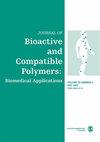壳聚糖-银纳米复合材料在防治臭虫中的应用前景
IF 2.1
4区 生物学
Q3 BIOTECHNOLOGY & APPLIED MICROBIOLOGY
引用次数: 0
摘要
本研究评价了壳聚糖-银纳米复合材料(CSN)作为杀虫剂对臭虫(Cimex lectularius)的作用。从受感染的居民区收集成臭虫,并使用光学显微镜和扫描电子显微镜进行鉴定。制备了CSN并拍摄了照片,用透射电镜、动态光散射和zeta电位进行了表征。以0.1%氯氰菊酯为阳性对照,生理盐水为阴性对照,比较了不同浓度(400 ~ 1000 ppm)的杀虫效果。取25只虫虫在相应培养基中浸泡20 min,滤纸干燥后,在27-28℃、70% RH条件下培养,光暗周期12:12 h。记录不同时间间隔(孵育后2、4、6、12、24 h)的死亡率,整个实验重复5次。图像分析显示,CSN为圆形至球形,尺寸在34 ~ 72 nm之间。死亡率与CSN浓度的增加呈正相关。24 hPI浓度为800 ppm, 12 hPI浓度为1000 ppm时,死亡率首先达到100%。计算的LC50在2hpi浓度为1165 ppm时被发现,LC99在2hpi浓度为1914 ppm时被发现。阳性对照氯氰菊酯在2 hPI时死亡率为100%,阴性对照无死亡率。这些结果清楚地显示了CSN作为一种杀虫剂的潜力。建议未来研究在临床环境中实施这些颗粒的最佳做法。本文章由计算机程序翻译,如有差异,请以英文原文为准。
Chitosan–silver nanocomposites as a promising tool for controlling the bed bug: Cimex lectularius (Heteroptera: Cimicidae)
This study evaluates the use of chitosan–silver nanocomposites (CSN) as an insecticide against the bed bug (Cimex lectularius). Adult bed bugs were collected from infested residential areas and identified using light microscopy and scanning electron microscopy. CSN were prepared and photographed for characterization using transmission electron microscopy, dynamic light scattering, and zeta potential. The insecticidal effect of different concentrations of CSN (400–1000 ppm) was compared to that of 0.1% cypermethrin as a positive control and normal saline as a negative control. The bugs (n = 25) were immersed for 20 min in the corresponding medium, dried with filter papers, and then incubated at 27–28°C and 70% RH with a 12:12 h light–dark photoperiod. The mortality rates were recorded at different time intervals (2, 4, 6, 12, and 24 h post-incubation (hPI)), and the entire experiment was repeated five times. Image analysis showed round- to spherical-shaped CSN ranging in size from 34 to 72 nm. The mortality rates were positively associated with increasing concentrations of CSN. The mortality rate first reached 100% for concentrations of 800 ppm at 24 hPI and 1000 ppm at 12 hPI. The calculated LC50 was found at a concentration of 1165 ppm at 2 hPI, and the LC99 was found at a concentration of 1914 ppm at 2 hPI. The positive control, cypermethrin, induced 100% mortality among the bugs at 2 hPI, while the negative control caused no mortality. These results clearly show the potential of CSN as an insecticide against C. lectularius. Future studies on best practices for implementing these particles in clinical settings are recommended.
求助全文
通过发布文献求助,成功后即可免费获取论文全文。
去求助
来源期刊

Journal of Bioactive and Compatible Polymers
工程技术-材料科学:生物材料
CiteScore
3.50
自引率
0.00%
发文量
27
审稿时长
2 months
期刊介绍:
The use and importance of biomedical polymers, especially in pharmacology, is growing rapidly. The Journal of Bioactive and Compatible Polymers is a fully peer-reviewed scholarly journal that provides biomedical polymer scientists and researchers with new information on important advances in this field. Examples of specific areas of interest to the journal include: polymeric drugs and drug design; polymeric functionalization and structures related to biological activity or compatibility; natural polymer modification to achieve specific biological activity or compatibility; enzyme modelling by polymers; membranes for biological use; liposome stabilization and cell modeling. This journal is a member of the Committee on Publication Ethics (COPE).
 求助内容:
求助内容: 应助结果提醒方式:
应助结果提醒方式:


